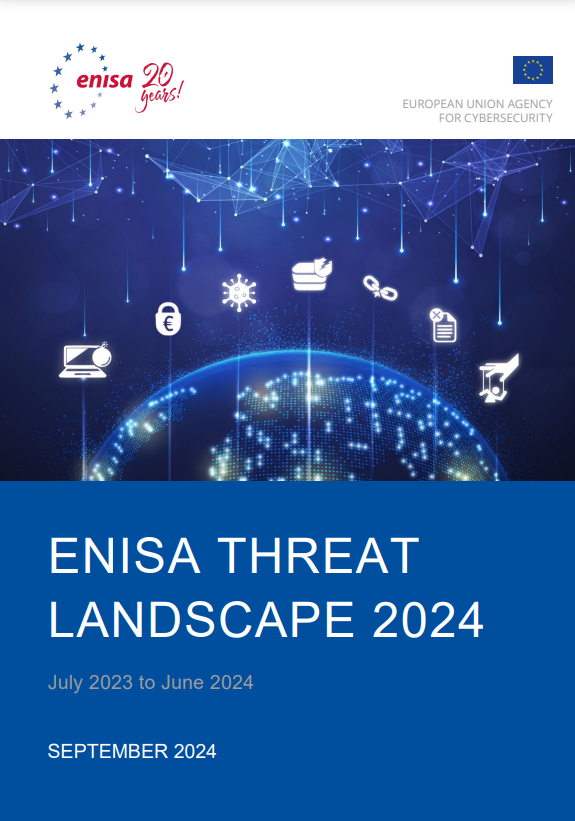European Union Agency for Cybersecurity (ENISA) Threat Landscape 2024 Overview:
The ETL is a vital tool for strategic decision-makers, cybersecurity professionals, and policymakers to understand the latest trends and prepare for upcoming challenges.
Prime Cybersecurity Threats in 2024:
1. Ransomware: Threat actors increasingly use multiple extortion techniques, including data exposure.
2. Malware: Broadly defined as software intended to compromise system security, malware remains a critical threat, especially in the form of Malware-as-a-Service (MaaS).
3. Social Engineering: Exploiting human error through phishing, spear-phishing, and other manipulation tactics remains a key attack vector.
4. Data Threats: Both data breaches (intentional attacks) and data leaks (accidental exposures) are on the rise, impacting organizations’ sensitive information.
5. Denial of Service (DDoS): These attacks disrupt system availability and continue to pose significant threats to critical infrastructure and public services.
6. Information Manipulation and Interference: This involves misinformation campaigns, particularly in geopolitical contexts.
7. Supply Chain Attacks: While fewer supply chain incidents were publicly reported, the threat remains significant due to potential vulnerabilities in open-source projects and infrastructure.
Key Trends in the Cyber Threat Landscape:
– Threats against availability (DDoS) and ransomware rank as the top threats.
– Increased use of Living Off Trusted Sites (LOTS), where attackers exploit trusted platforms like Slack or Telegram to evade detection.
– Rising cases of Business Email Compromise (BEC) and extortion through data exposure.
– AI tools such as FraudGPT are increasingly used by cybercriminals.
– Surge in mobile banking trojans and more complex attack vectors.
The ETL categorizes threat actors into:
1. State-nexus actors: Engaged in espionage and disruption, often linked to military or intelligence organizations.
2. Cybercrime actors: Motivated by financial gain, employing ransomware and other criminal tactics.
3. Private Sector Offensive Actors (PSOA): Entities that develop and sell cyberweapons, increasingly involved in espionage and targeted attacks.
4. Hacktivists: Politically or ideologically motivated groups leveraging cyberattacks for social disruption.
The most targeted sectors were public administration, finance, and transport, with significant attacks also observed against digital infrastructure and business services.
Vulnerabilities and Defensive Challenges:
ENISA observed 19,754 vulnerabilities, with 9.3% categorized as critical. Vulnerabilities in edge devices and Remote Monitoring and Management (RMM) software, like ScreenConnect, were particularly exploited.
Recommendations:
ENISA emphasizes the importance of vulnerability management, incident response planning, and awareness training to mitigate the evolving threat landscape.
European Union Agency for Cybersecurity (ENISA) Threat Landscape 2024 Overview
No Comments

Recent Posts
- EKSec & Accurate Global INC: A Partnership Transforming ISO Certification Audits in Tunisia and Algeria December 28, 2024
- Exciting Partnership Announcement: EKSec and PECB Join Forces! October 14, 2024
- EKSec is Coming Soon! September 28, 2024
- 2024 Global Cyber Confidence Index – Key Insights September 28, 2024
- Algeria’s Cybersecurity Journey: A Nation on the Rise! September 28, 2024
Categories
- EKSec Announcement (3)
- ENISA (1)
- Global Publication (2)
- PECB Magazine (1)
- Service Provider (1)
